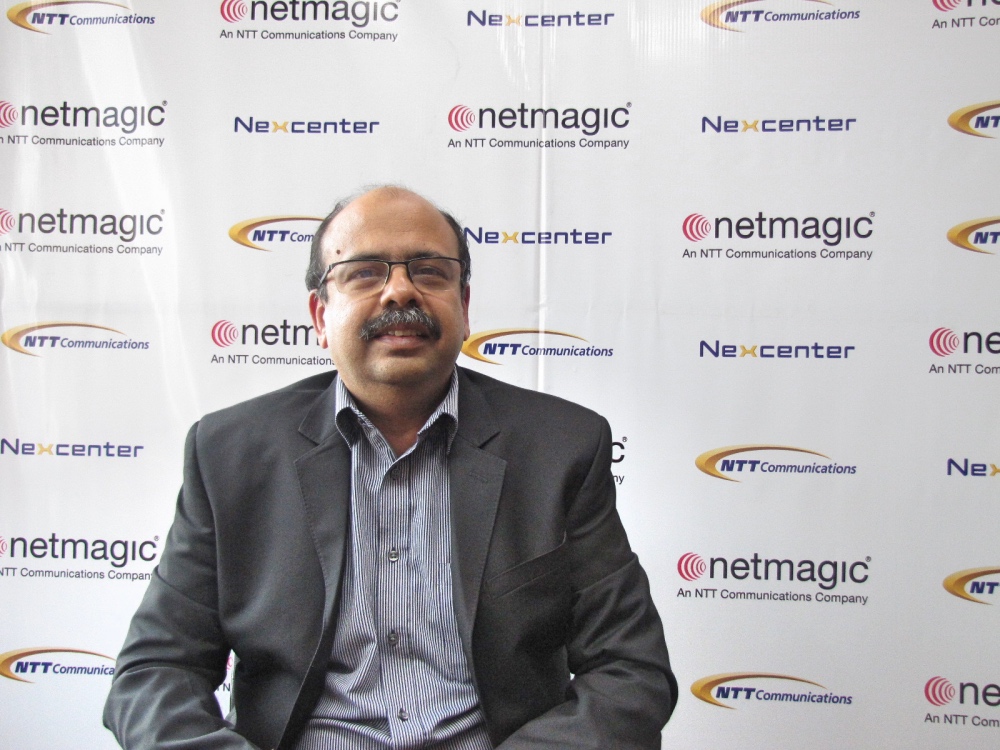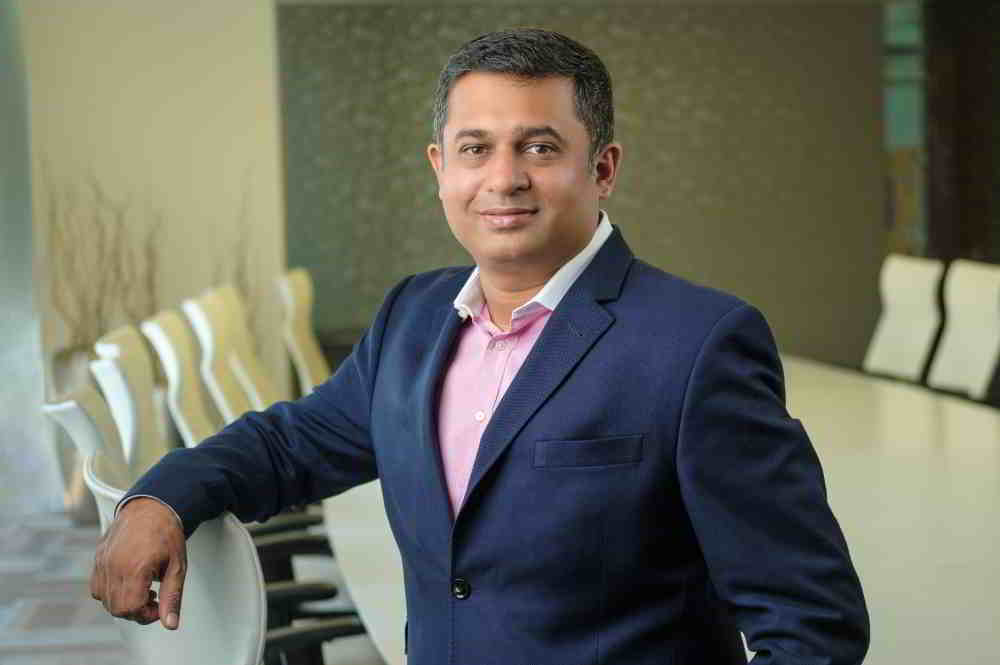Long before multinational cloud services companies catered to Indian customers, there was an Indian company that was already doing so. With a highly experienced team of professionals, the company was nimble, agile and could move fast to respond to the bespoke needs of its customers. It was flexible, always innovating, and offered unique services for co-location and infrastructure management – which no one else was offering in India at that time. Not surprisingly, the demand for its services and data centers grew at a rapid clip, and it had to build more data centers.
Last year, Netmagic Solutions announced the doubling of its capacity over the next two years; it will be investing Rs 2,000 core. For instance, its 300,000 square feet Data center 5 in Mumbai (the largest in the country), was launched last October, and is already used to capacity. Customer demand for its co-location services, managed services, public cloud and SimpliVPC on SAP HANA is soaring.
What gave Netmagic Solutions a fillip was the investment from NTT Communications (NTT Com), a subsidiary of the Japanese telecom giant NTT Corporation.
The NTT Group is now in unification mode, bringing all its global companies together to work in concert, complementing each other’s businesses in different regions of the world. NTT Com considers Netmagic a strategic partner in the Asia Pacific region, servicing its global customers. That makes Netmagic a global player.
We asked Sharad Sanghi, CEO, Netmagic Solutions about his plans to prepare for that growth, the new focus areas – and how Netmagic Solutions will integrate with its parent company NTT Com.
Q. Can you comment on the unification of all the NTT global companies. How will Netmagic in India integrate with the global companies in the group? How does your vision align with that?
The vision of the NTT Group globally, is to provide a global seamless service to their global multinational customers across information & communication technologies — basically, end-to-end services. Netmagic and other NTT Group companies in India are enabling that vision. Netmagic is uniquely positioned because it has a very strong base of managed services; it can provide its managed infrastructure services to customers across the world. We have a strong software team that is not only developing solutions for India, but also for NTT across the world. India is a very large market and the fastest growing economy for NTT.
This vision is enabled by partnering with other NTT Group companies — whether it is the network from NTT Communications India or NTT Data, for application management services, or with Dimension Data for their system integration services across the country. We are providing the NTT customer (globally) with end-to-end service — with one face, one account manager, one product manager. There will be one or two companies signing the contract, but the customer will have a consolidated view, thereby enabling NTT’s vision not only in India, but across the globe.
We are now part of NTT and are working with it to make this offering that we have in India, seamless globally. NTT is in the process of offering global seamless cloud services across the world; we are enabling NTT from multiple sources. A software team in Pune is contributing to their global cloud development; our managed services teams in Mumbai & Bengaluru, remotely manage their cloud grids across the world. And now we are bringing in this capability of doing a combination of bare metal, VPC and public cloud, so that customers get the flexibility. We are going to start that with APAC and then replicate that across the world.
Q. What are the factors that are contributing to your growth and what makes you optimistic about the business?
This growth has been fuelled by global multinationals coming to India. It has a lot to do with the incentives being offered by the government to attract foreign investment in India. It is also fuelled by the Digital India and demonetization efforts — we see many customers completely moving to digital, which requires data center infrastructure. The adoption of mission-critical applications running on cloud across various verticals, the advent of new payment banks – all these factors put together are showing the results now. We forecast a growth of almost 36 per cent this year.
We are very optimistic about our business over the next few years as we see growth in all our business lines. We are seeing huge growth with the advent of global cloud providers and global organisations coming to India. We see a lot of growth in co-location services. We see growth in our public cloud and SimpliVPC solutions because the markets are more matured and understand the benefits of cloud. Secondly, for our Virtual Private Cloud, especially in SAP HANA environments, we see growth there as well. Thanks to NTT’s global footprint, we are getting a lot of traction on global infrastructure management opportunities as well. We are seeing a huge growth in managed services even in the domestic market.
More customers are opting to choose managed services from us as opposed to just renting infrastructure or hosting infrastructure with us.
So, all these factors put together make us very bullish.
Q. I observe that DC 5 was launched in October 2016 and already (in Feb 2017) it’s utilization is almost 80 per cent of its capacity. What are your plans for adding more capacity?
We are looking at building two more data centers: one is a 300,000 square foot data center in Mumbai. The second will be 250,000 square feet, located at Whitefield, Bengaluru. Both will be launched in April 2018. So, we are doubling our existing capacity.
Q. How do customers benefit from your Managed Services versus say, dedicated hosting?
When we say managed services, it is about infrastructure management; I am not talking about application management. The value proposition is that the customer focusses on his core competence. He may work with an application provider for application maintenance and management. But he outsources the hosting and the management of his infrastructure to us. The biggest advantage to the customer is cost. He is paying only the fraction of the cost for skills. We have the skills in all areas, round the clock in our data centers. The customer is sharing the cost of these skills. He does not have to worry about replenishing if someone leaves.
Since we have more than 1,500 customers and a common set of skills, we can share these skills across multiple customers. Therefore, each customer pays only a fraction of the cost as opposed to paying dedicated cost for three people, taking into account shifts plus backups and a supervisor. So this is a win-win for the customer and for us.
Q. Everyone is talking about application performance management and monitoring now, especially after the recent Cisco acquisition of AppDynamics. What are your plans for the application performance monitoring space?
We have already integrated Cisco ACI (Application Centric Infrastructure), with both VMware stack and Microsoft HyperV stack, for some of our customers. SimpliVPC uses the HyperV integration with ACI. For customers like India Infoline and other financial customers, we have done VMware integration with ACI.
Customers do ask us for application performance management and monitoring. We have worked with both AppDynamics and New Relic, so we do have offerings in that space as well.
In fact, we won an award from Cisco for the best implementation of ACI in the country.
Q. Last year you invested $12 million in VPC (Virtual Private Cloud) and this year you are doubling the investment. What is driving demand for VPC services?
There are many factors but the main one is companies adopting the SAP HANA environment. VPC is an ideal platform for deploying SAP HANA, where the compute is dedicated but the network and storage is shared.
We have offered this (VPC) to many of our customers and it brings down the cost of ownership, and it is a very quick deployment for them.
VPC is indeed proving to be an ideal hybrid solution, as our customers get to enjoy best of both worlds by hosting their private clouds or data centers in our single-tenant, managed hosted environment with seamless extension to our public cloud ecosystem to better manage their peak load burstability. No one in India offers this kind of implementation.
Q. What are the emerging models and new developments coming in for cloud services?
Hybrid cloud is the most popular flavour for mission critical enterprises. There will be some loads, either because of application constraints or because of licenses, or because of existing investments, or just the cost as they scale up. Some may prefer dedicated bare metal servers, while they may prefer some workloads on public cloud, especially the elastic workloads. Therefore, hybrid cloud is here to stay.
The new development that we are seeing is containers on cloud as opposed to virtual machines. More customers are asking for data analytics using the cloud. We will use artificial intelligence to enhance capabilities for customers. We are also working with the global NTT teams in these areas.
Q. What are the verticals where you have a lot of customers?
There are many segments where we have got a lot of customers. Media & Entertainment is a major segment. All the major media houses in India are present on our platform. Some are using our cloud or doing co-location or a combination of hybrid cloud. Some are using managed services.
There are many customers In the e-commerce sector too.
BFSI is our biggest sector and we have many banks. RBL Bank is a major customer. There are many other banking customers who use us as a primary or DR site..
BFSI also includes the Broking industry. Traditionally, we have been strong in this sector, and have a data center in the Bombay Stock Exchange to facilitate algorithmic trading. Now we have almost all the leading brokers hosted in our data centers.
We also have many insurance companies.
Q. What are your USPs and best practices that get you all those industry awards for excellence?
The products that we offer today were the first of their kind in India. For instance, when we started co-location we offered half, quarter and full rack solutions. We were the first to offer managed services in addition to co-location services.
We were always characterised by little bureaucracy. We were always a nimble, agile company that is constantly innovating.
Q. How has the NTT investment made a difference to your business?
Before NTT invested, we were a relatively small company with a small balance sheet. That’s why we usually lost out on contracts, as companies were hesitant to outsource to a small company.
Now with NTT coming in, we have the largest balance sheet of a data center company in the country. This gives customers a lot of confidence.
Yet we operate autonomously as an Indian entity. While we have the backing of a large parent, we have not lost our agility and flexibility. This has made us unique.
We continue to maintain our strengths which are product innovation and agility.
Q. How do you differentiate your services from Azure or AWS?
AWS and Azure are cookie cutter cloud models spread across the world. Netmagic offers a basket of services: co-location, public cloud (similar to AWS and Azure) and SimpliVPC (a virtual private cloud). We can offer bare metal (servers) as well — if a customer wants a dedicated server. All this can be seamlessly interconnected. We have a significant presence for cloud in India.
The other differentiator is that we provide in-depth managed services across all our product lines. The value proposition that we offer our customers is a one-stop shop. If the customer already has infrastructure we can make it hybrid, combining it with the public cloud. That’s flexibility. We can also manage the whole infrastructure for the customer as part of our managed services play.
——————————————————————————————————————————————————-
PAID MEDIA










